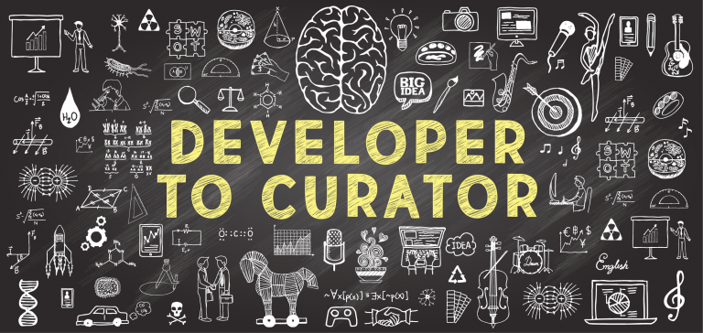 In the past, learning professionals were in the business of creating content to “train” people. Learners experienced a lot more “telling” and “showing,” and often the communication between the instructor and the learners was one way, i.e., instructor to learner. In today’s world of mega-information and sensory overload, most adult learners can’t be “told” everything they might need to know. Filtered quality content has much greater value than massive amounts of non-relevant information. It is more important to be able to access the needed information or content at the right time rather than getting “trained” in the classical sense. What implications does this have for today’s learning professional?
In the past, learning professionals were in the business of creating content to “train” people. Learners experienced a lot more “telling” and “showing,” and often the communication between the instructor and the learners was one way, i.e., instructor to learner. In today’s world of mega-information and sensory overload, most adult learners can’t be “told” everything they might need to know. Filtered quality content has much greater value than massive amounts of non-relevant information. It is more important to be able to access the needed information or content at the right time rather than getting “trained” in the classical sense. What implications does this have for today’s learning professional?
Educare vs. Educere
According to the Merriam Dictionary, the word “educate” first appeared in the lexicon in the fifteenth century. It comes from the Latin from two words, which have interesting meanings and parallel the shift in what is expected of the modern learning professional. The first word is “educare,” which is synonymous with “rearing.” Think of this as the way you raise a child. You are doing a lot of training and showing. The second word is “educere,” which is to lead forth, which is what the modern learning professional really should be doing. Leading their constituents to the right content, information, and knowledge.
This shift for the best way for people to learn is important also because frankly given the hyper-explosion of information, it is impossible to create traditional training for all of it. There must be a better way to do this and one way is for learning professionals from being developers and transitioning to curators. Why a curator?
Meet our Content Curation Expert – Gina Richter
The Museum Curator Analogy
The best museum exhibits are thematic in nature. A thoughtful museum curator creates a visual and tactile story weaving history, context, and artifacts into a compelling tapestry for the museum patrons. This critical role (curator) and ability (content curation) is now a must-have competency for the modern learning professional. Like a museum curator, the learning pro must be thoughtful about where the content is located, how it is accessed, when it is available, and what is important to know about each “content artifact.” Excellent curators also provide context around every piece they discuss. The modern learning professional maximizes learning effectiveness when content has context.
Learn more about the St. Charles Consulting Group’s Customized Curation Services.
So, you want to be a curator?
How can you become more of a curator than a developer?
- Stay abreast of current learning trends and technologies.
- Learn more about core concepts related to curation like: Aggregation, Filtering, Elevation, Mashups, and Timelines.
- Network with like-minded professionals.
- Consider the context of all content.
- Try to create content in the smallest most self-contained structures possible.
- Before creating any content, ask yourself questions your learners may have about it, and take those questions into consideration when building it.
- Review case studies on companies/technologies who are enabling on-demand, on-the-job learning.
- Gather continuous feedback on your learning programs and how they can be improved.
- Know that this fundamental shift is not a threat, but an opportunity to expand your current tool set.
In Summary
“Old school” tactics for one-way (sage on the stage) training are doomed to failure and will drive your learners to find content on their own from wherever they can get it. Be the master content curator and make your content contextual, accessible, searchable, and valuable, and you will always have plenty of organizational customers.
Books on Curation
Curation Nation: How to Win in a World Where Consumers are Creators, (Rosenbaum, 2011)
Curate This: The Hands-On, How-To Guide to Content Creation, (Rosenbaum, 2014)
Content Curation: How to Avoid Information Overload, (Anderson, 2015)
Written by Melissa Noonan, Managing Director at the St. Charles Consulting Group